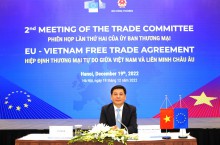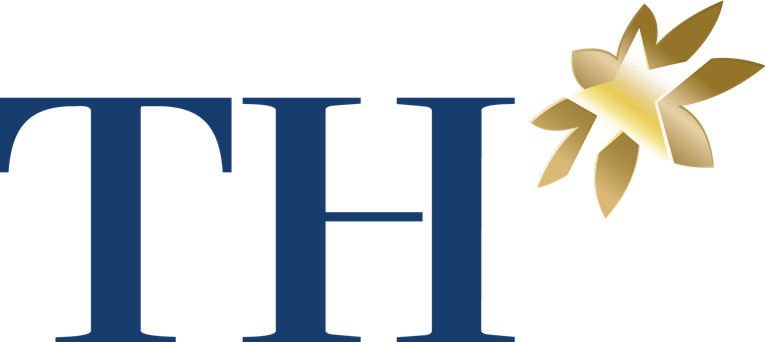The News
Vietnamese rice well-received in Europe
The EU-Vietnam Free Trade Agreement (EVFTA) has opened up unprecedented opportunities for Vietnamese rice. Thanks to the preferential tariffs, the export of fragrant rice and high-quality rice to the European market (EU) is highly appreciated and gives positive results.
The EU-Vietnam Free Trade Agreement (EVFTA) has opened up unprecedented opportunities for Vietnamese rice. Thanks to the preferential tariffs, the export of fragrant rice and high-quality rice to the European market (EU) is highly appreciated and gives positive results.
According to data from the General Department of Customs, Vietnam's rice exports to the EU market in the first 11 months of 2021 have not yet recorded a sharp increase in volume, but the export price and value have increased significantly with 53,910 tons, worth $38.07 million, increased by only 0.8% in volume compared to the same period in 2020, but the value collected increased by 21.6%.
According to the Import and Export Department (Ministry of Industry and Trade), this result shows that businesses have effectively taken advantage of a number of advantages from the EVFTA Agreement to increase the value of rice exports to the EU, especially in the context of the pandemic. Due to the complicated development of the disease, sea freight rates to the EU increased sharply and rice imports from this market decreased in 2021.
Although the EU currently only accounts for a small proportion of Vietnam's total rice exports (accounting for 1% in volume and 1.3% in turnover), this is a potential market for exporting high-value rice varieties. .
In the first 11 months of 2021, Vietnam's fragrant rice exports to the EU reached 37,390 tons, worth US$26.82 million, up 9.3% in volume and 28.4% in value over the same period in 2020. In which, some specialty rice varieties of Vietnam such as ST24, ST25 were exported to the EU market for the first time. The share of fragrant rice in Vietnam's total rice exports to the EU has also increased to 70% in the first 11 months of 2021 from 64% in the same period of 2020.

Meanwhile, with the exception of organic rice, dragon blood rice, etc., which saw a sharp decrease of 87% in export volume to the EU, other rice varieties increased sharply such as: white rice increased by 40.9%, seed rice increased by 40.9%? Japan increased by 137.6%, glutinous rice increased by 323.2%. Notably, the price of Vietnamese rice exports to the EU market increased sharply compared to the first 11 months of 2020 such as: fragrant rice increased by 17.5%, reaching an average of 665 USD/ton; white rice by 41.8%; Japanese rice varieties increased by 7.5%, brown rice, organic rice, dragon blood rice... increased by 38.5%.
According to data from the European Statistics Authority (Eurostat), EU rice imports in the first nine months of 2021 fell by 10.9% in volume and 9.3% in value over the same period last year. 2.63 million tons, worth 2.1 billion USD. However, among the 10 major foreign rice suppliers to the EU in the first 9 months of 2021, Vietnam's rice export price to the EU achieved the strongest increase, up 20.3%, reaching an average of 781 USD/ton. Therefore, although Vietnam's rice exports to the EU decreased, the export turnover still increased by 13.2%, reaching 34.03 million USD.
With 27 member countries, a population of about 516 million people, GDP per capita of over $35,000/year, the EU market has a need to import a large amount of goods, especially agricultural products (every year imports more than 160 billion USD per year) from all over the world. For Vietnam, this is the third largest export market of agricultural products, with a turnover of about 5.5 billion USD per year. But Vietnamese agricultural products only account for 4% of the EU's import market share, rice alone accounts for just over 1% of the market share.
In 2022, Vietnam's rice exports to the EU are expected to increase significantly. In particular, the quality of Vietnamese rice has been improved, mainly aromatic rice varieties, hitting the tastes of European consumers. Taking advantage of the EVFTA to export fragrant rice with 0% tax is in the hands of enterprises with large raw material areas, cultivated according to high standards such as Loc Troi, Tan Long, Trung An ...
References: The Free Trade Agreement between Vietnam and the European Union (EU), referred to as the EVFTA Agreement, and the Investment Protection Agreement between Vietnam and the European Union, referred to as the IPA Agreement, was started and ended in the context of the growing bilateral relationship between Vietnam and the European Union, especially in the fields of economy, trade and investment.
EVFTA is a comprehensive, high-quality agreement that ensures a balance of benefits for both Vietnam and the EU. When put into effect, the EVFTA will be a huge boost for Vietnam's exports, helping to diversify markets and export products, especially agricultural and aquatic products which have many competitive advantages. The commitments to give fair, equal treatment, safe and full protection to each other's investments and investors in the IPA Agreement will also contribute positively to building a transparent legal and investment environment, so that Vietnam will attract more investors from the EU and other countries.
According to the Department of Multilateral Trade Policy (Ministry of Industry and Trade), when it comes to the EVFTA Agreement, we are talking about the unremitting efforts of the whole political system during the decade since Vietnam and the EU agreed to conduct a feasibility study on the negotiation of a Free Trade Agreement (FTA) between the two countries in October 2010. This is because Vietnam and the European Union are two economies with disparities in terms of level of economic development as well as differences in political systems.

-cr-220x145.jfif)


